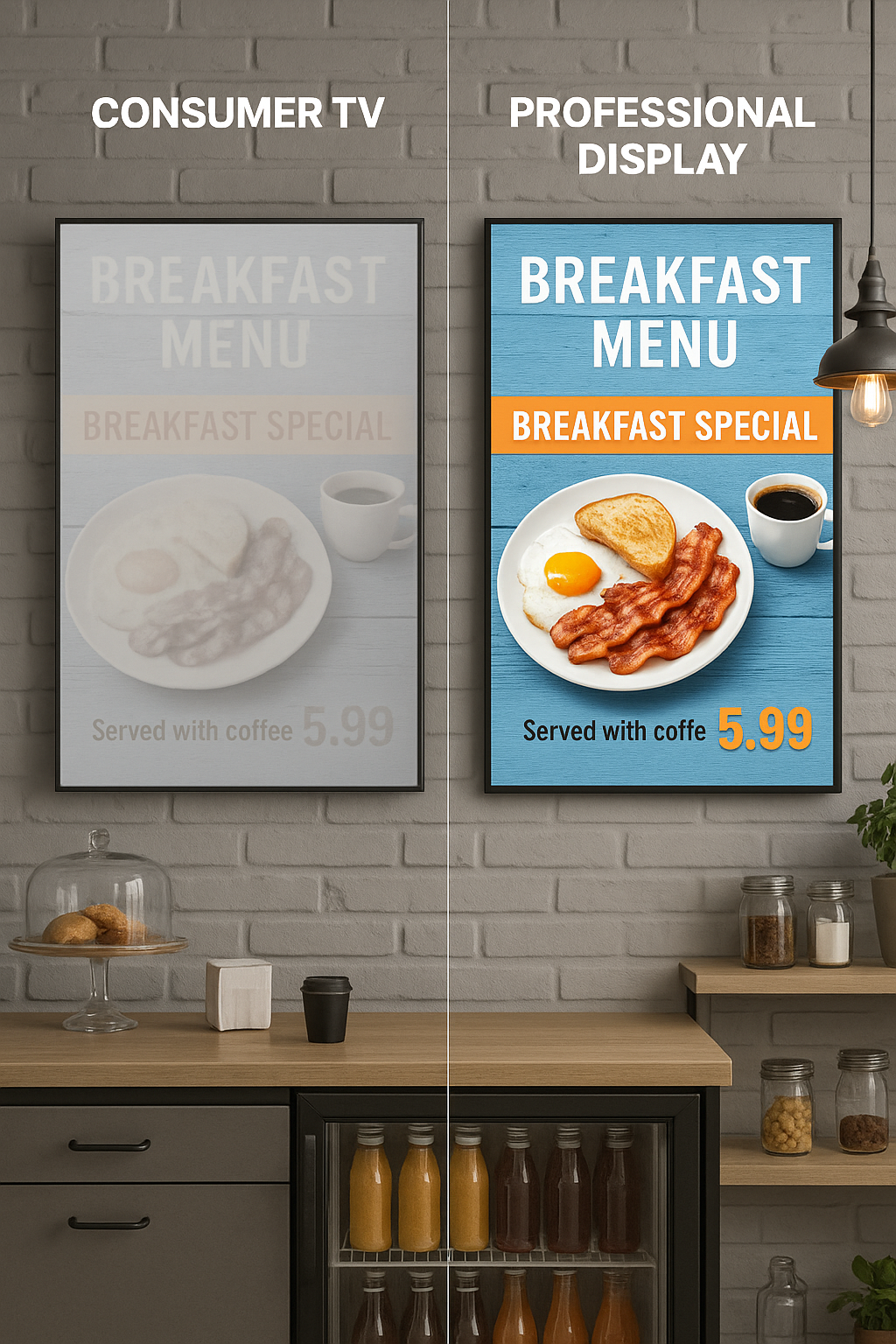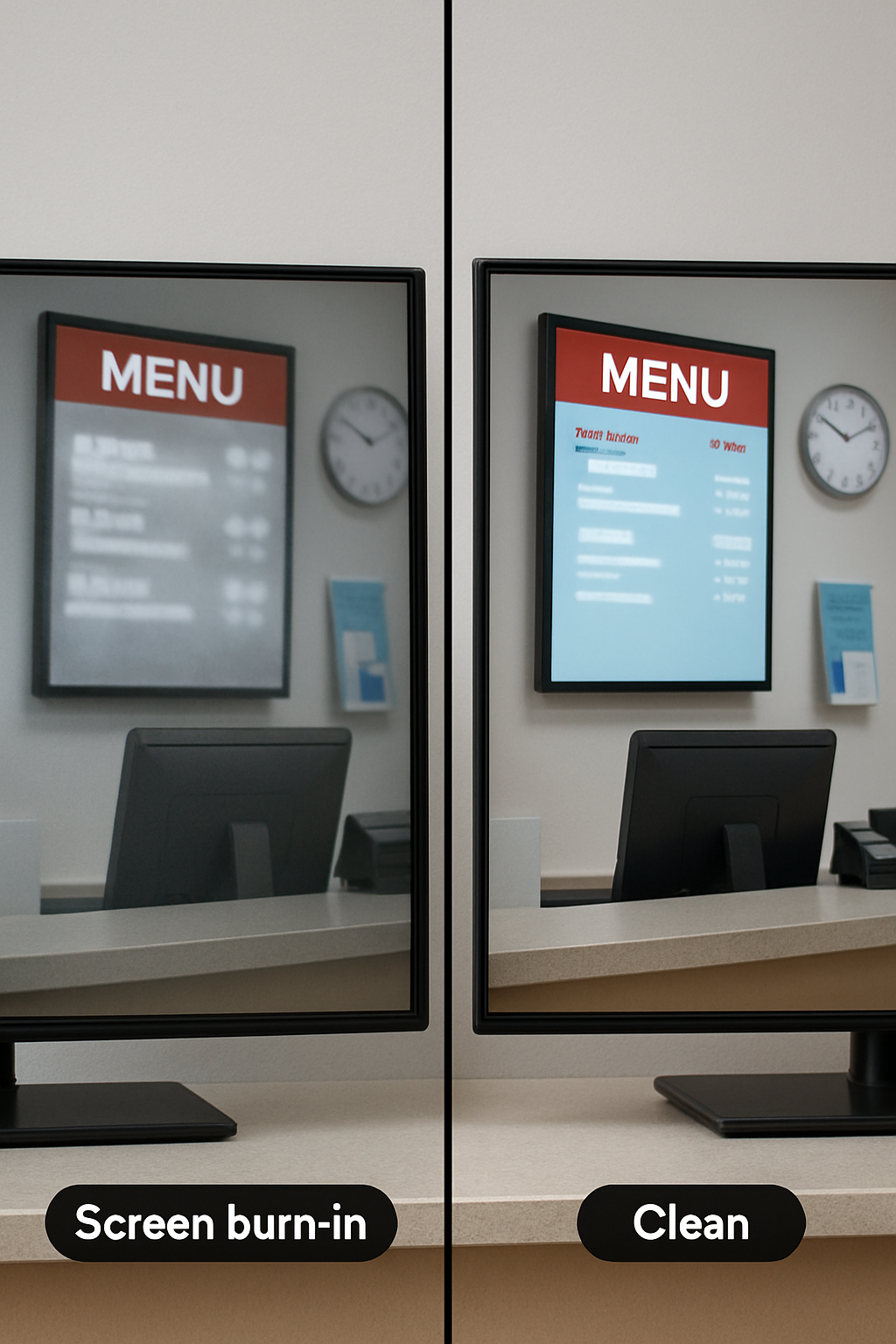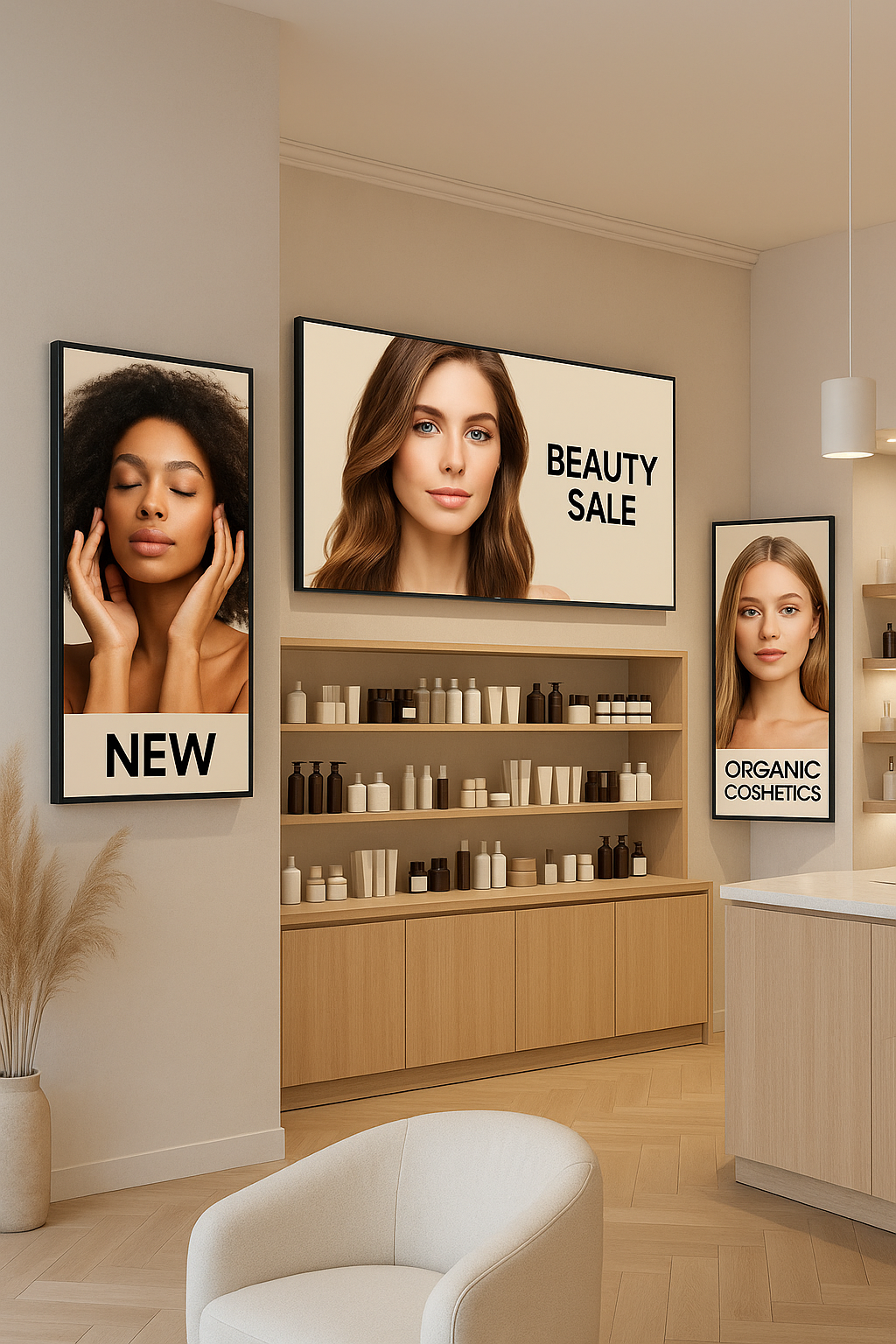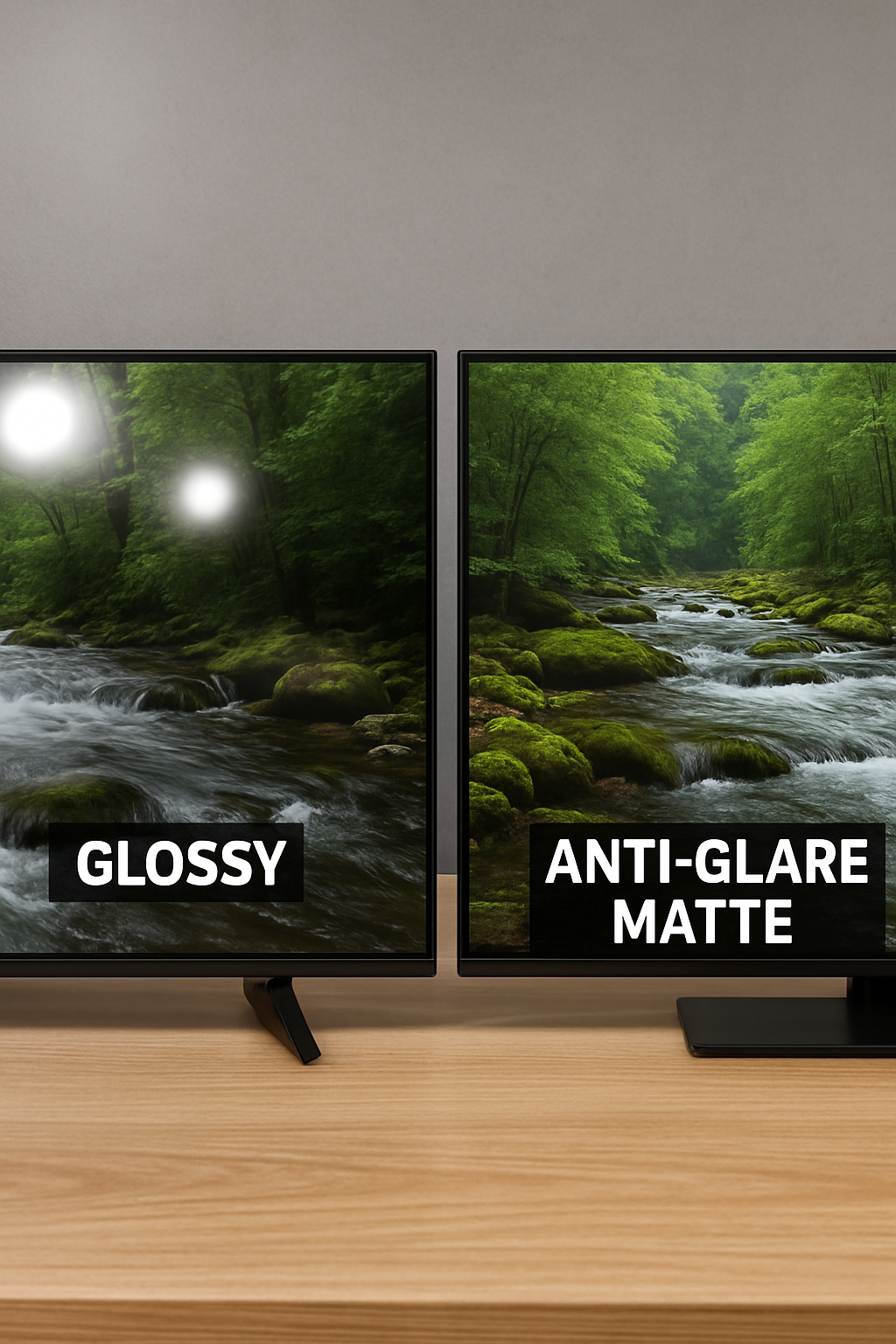Regular TVs might seem like a budget-friendly way to display your business content, but they’ll cost you more in the long run. In this post, I’ll show you why professional digital signage displays — like Samsung’s — are a smarter investment for your brand, your uptime, and your customers.
If you’re a business owner thinking of using a regular consumer TV to display your menu, promotions, or ads, hold that thought.
It might seem like a smart way to save money. After all, a screen is a screen, right?
Well… not exactly.

As someone who’s helped dozens of business owners upgrade their digital signage systems, I’ve seen this mistake more times than I can count. And I’ve also seen the difference it makes when a company finally switches to a professional display — the clarity, uptime, ease of use, and customer perception improve drastically.
What is a Consumer TV Display?
Consumer TV displays (also called consumer-grade TVs) are television screens designed primarily for personal or home use, such as entertainment, gaming, and streaming online content.
What is a Commercial Display TV?
A commercial display TV (also known as a commercial-grade or professional display) is built specifically for business use. These screens feature advanced capabilities and tougher components to withstand continuous 24/7 operation in public or high-traffic commercial environments.
Let us Let me walk you through why using a consumer TV for business signage is risky, short-sighted, and usually more expensive in the long run.
1. Built for the Couch, Not for Your Counter
Consumer TVs: Made for Netflix, Not Menus
Consumer televisions are designed with one thing in mind — home entertainment. They’re built to work a few hours a day in a temperature-controlled living room, with content that’s always moving (like movies or sports). When used in commercial settings — like displaying static menus or promotional graphics for long hours — issues start to appear. Brightness can degrade quickly, image retention or "ghosting" may occur, and the overall reliability drops. Simply put, TVs are not engineered for 15+ hours of continuous use, nor for the static or semi-static content common in business settings.
Commercial Displays: Built for Business
Professional signage screens like Samsung’s commercial displays are engineered to run all day, every day — often 16–24 hrs/day — with high brightness, heat resistance, and industrial components that keep the screen stable and sharp.
2. Brightness Isn’t Just About Looks — It’s About Visibility
Why 400 Nits Won’t Cut It in Retail
Consumer TVs are built for indoor, low-light environments — not brightly lit retail spaces. Their typical brightness levels (around 300–500 nits) are often insufficient in commercial environments with strong ambient lighting or direct sunlight.
In contrast, professional digital signage displays offer high brightness levels (often 500–4000 nits), ensuring clear visibility from a distance and under various lighting conditions. This clarity plays a crucial role in grabbing attention and delivering your message effectively.
Commercial Screens: Designed to Shine
Samsung’s digital signage displays can go as high as 4,000 nits for outdoor models and 700+ nits for indoor use. The difference isn’t just technical — it’s noticeable to your customers. Brighter screens grab attention and keep content legible from any angle.
3. Screen Burn-In: A Real (and Ugly) Problem
What Happens When You Display Static Content?

Consumer TVs aren’t made to display static content for long periods. When used to show menus, price lists, or schedules, the repeated display of the same content can cause image retention or burn-in — leaving a ghost image permanently on the screen.
Professional signage displays are specifically engineered to avoid this issue. They’re built for 16/7 or 24/7 operation and designed to display static or semi-static content without degrading over time. This makes them ideal for digital menus, service boards, and information screens.
Commercial Displays Are Burn-In Resistant
These displays use specialized panels and technologies that protect against burn-in, even when showing static content 24/7.
4. Orientation, Cooling, and Mounting Flexibility
TVs Were Meant for the Sofa
Most TVs only work in landscape mode. Mount one vertically? You risk overheating and image distortion. They also aren’t built to withstand heat, dust, or long usage.
Signage Screens Are Flexible and Robust
Need to mount your screen vertically? Samsung signage supports portrait and landscape orientations. Want to hang it in a window or outdoors? No problem. These displays come with better cooling systems, dust protection, and professional-grade enclosures.

5. You Can’t Manage a TV from Your Desk
Where’s the Remote?
Consumer TVs are built for home use, which means managing them relies on physical remotes and manual input. If you want to change content, update promotions, or adjust settings, someone has to be physically present — often standing in front of the screen with a remote control.
There's no way to schedule content or manage multiple screens from a central location.
Professional Displays Support Remote Management
Commercial signage displays, like Samsung’s QBR and QMR series, are designed with business efficiency in mind. They come with built-in support for remote content management platforms such as MagicINFO or other Smart CMS systems. This allows businesses to:
Schedule content by the hour, day, or week
Push updates remotely from a laptop or smartphone
Monitor display health and status in real time
Control multiple screens from a centralized dashboard
For businesses managing several branches or frequently changing promotional content, this level of control isn’t just convenient — it’s essential. It saves time, reduces errors, and ensures consistent communication across all locations.
6. Say Goodbye to Reflections: Anti-Glare Makes a Big Difference
Consumer TVs often have glossy screens that reflect ambient light, windows, or even ceiling lamps — making them hard to read in well-lit environments.
Samsung’s commercial signage displays feature anti-glare coatings that keep your content visible and sharp, even under bright lighting. This is especially important in storefronts, salons, clinics, and any business with natural light.

7. Need Interactivity? Signage Can Do That Too
Unlike consumer TVs, many professional displays come in touch-enabled models. This opens the door for:
Self-check-in kiosks
Interactive directories
Booking or ordering stations
Educational or promotional experiences
These displays are designed for commercial use, which means they’re more durable and responsive than consumer tablets or touch overlays.
8. Design That Fits Your Brand
Ever noticed how TVs are often bulky and uneven around the edges?
Professional digital signage displays feature:
Even bezels: The bezels are consistent and even on all four sides of the display, with the same thickness and dimensions. The new even bezel design prevents any visual issues from arising when the display is adjusted to portrait mode.
Ultra Slim Depth: It comes with the Slim Fit Wall Mount, which allows you to install it neatly and easily in any environment. It optimizes space with its sleek design that blends seamlessly into your business.
Symmetrical designs: Clean, balanced shape for unified installations.
That makes them ideal for side-by-side setups or high-end retail aesthetics.
See the Difference: True 4K Picture Quality
When it comes to digital signage, resolution matters — especially in high-traffic areas where viewers glance from a distance. Samsung’s commercial displays offer stunning 4K Ultra HD resolution, delivering over 8 million pixels for sharp, vivid visuals that stand out.
But it’s not just about the number of pixels. What really makes a difference is how content is processed. Thanks to the Quantum Processor Lite 4K, Samsung’s intelligent video engine, even standard HD content is upscaled to near-4K quality. This means clearer text, smoother edges, and lifelike color — no matter what you’re displaying.
Whether you're showing product promotions, service menus, or brand videos, everything looks crisp, professional, and easy to read — even under bright lighting or from across the room.
It’s a level of visual quality that consumer TVs simply can’t match.
10. Warranties Matter — Especially for Business Use
Here’s something most people overlook:
🛑 Using a consumer TV in a commercial environment voids the 1-year warranty in most cases.
So if your screen fails from heat or long usage — which it likely will — you’re out of luck.
Samsung’s digital signage products, on the other hand, come with a 3-year commercial warranty. Additionally, there’s access to B2B support, which is a significant benefit when issues arise and you require prompt assistance.
Invest in the best choice.
11. Your Digital Signage = Your Brand Image
Let’s be real — when a customer sees a fuzzy, flickering screen with low brightness, what do they think?
They may not say it, but they’re subconsciously asking:
“If this business cuts corners on their signage, where else are they cutting corners?”
And on the flip side: a professional display — sleekly installed, bright, showing updated content in high resolution —
✨ These details build trust
✨ Reflect your seriousness and professionalism
✨ And leave a lasting positive impression of your brand
In business, the small details make the biggest difference.
12. The Real Cost Isn’t the Screen — It’s the Downtime and Missed Opportunity
Let’s do the math:
A consumer TV = ~50KWD–800KWD
A professional digital signage display = ~170KWD–1,300 KWD (depending on size and features)
At first glance, the TV seems cheaper. But factor in:
Shorter lifespan (you might need to replace it every 1–2 years)
Downtime when it breaks or overheats
Missed sales from poor visibility
No CMS or remote management
Burn-in that ruins your message
Voided warranty
💸 Over 3 years, you’ll likely spend more on maintaining and replacing TVs than if you invested in proper signage from day one.
Final Thoughts: Invest Smart, Not Just Cheap
I get it — budgets are tight, and it’s tempting to use what you have.
But as someone who works closely with business owners across industries, I can tell you this:
🗣️ “I wish we did this from the start” is the most common thing I hear after upgrading to professional signage.
Don’t wait for a failure or customer complaint to act.
Instead, position your business for growth by investing in the right tools — tools built for commercial success.
🎯 In a nutshell, What’s the Difference? | TV vs. Professional Digital Signage
Let’s break it down visually:
Feature | Samsung Digital Signage | Consumer TV |
Usage | 16–24 hrs/day continuous | 4–6 hrs/day only |
Brightness | 500–4000 nits (sunlight-readable) | 300–500 nits (indoor use) |
Orientation | Landscape & Portrait | Landscape only |
Content Burn-In | ✅ Resistant | ❌ High risk with static images |
Remote Management | ✅ MagicINFO, CMS & cloud tools | ❌ Manual control only |
Anti-Glare | ✅ Matte screen minimizes reflections | ❌ Glossy screen reflects light |
Touch Capability | ✅ Optional touch models available | ❌ Not supported |
Warranty | 3-Year B2B with support | 1-Year (void in commercial use) |
Mounting & Design | Slim, symmetrical, commercial-grade enclosures | Bulky with uneven bezels |
Operating System | Tizen / Android CMS-ready | Smart OS (limited) |
Support | Dedicated B2B Support | Consumer helpline |
Price | 💰 Higher upfront, lower lifetime cost | 💸 Cheaper upfront, higher long-term cost |
🚀 Let Us Help You Choose the Right Display
At B2BMerx, we’ve helped hundreds of businesses — retail, hospitality, clinics, F&B, and more — transform their customer experience with commercial-grade digital signage.
Need help finding the right Samsung display?
Want a side-by-side demo?
Curious how remote management works?
📩 Reach out today — we’re happy to guide you..
✅Let’s Future-Proof Your Screens.
Book a free consult with our team — we’ll help you compare models, understand your setup, and get the best return on your signage investment.
📞
Contact US!
🔗Resources:

